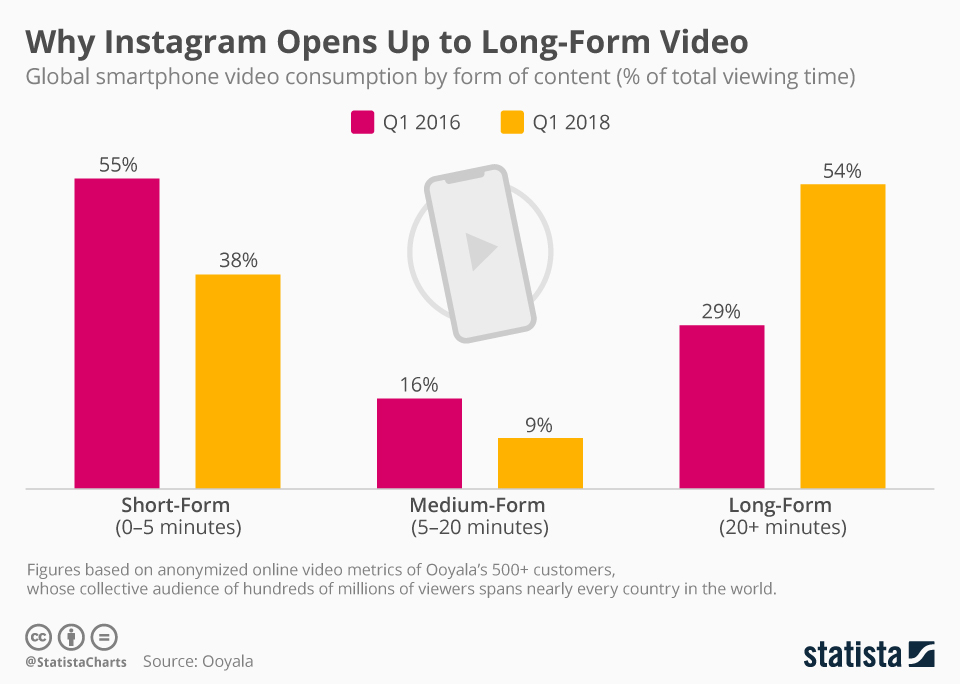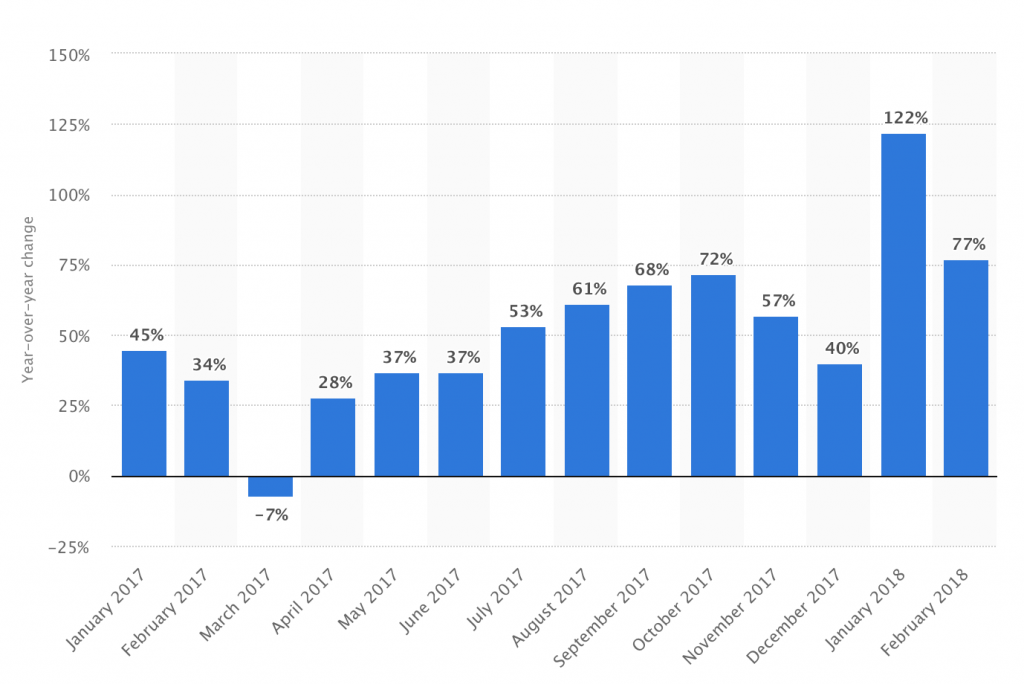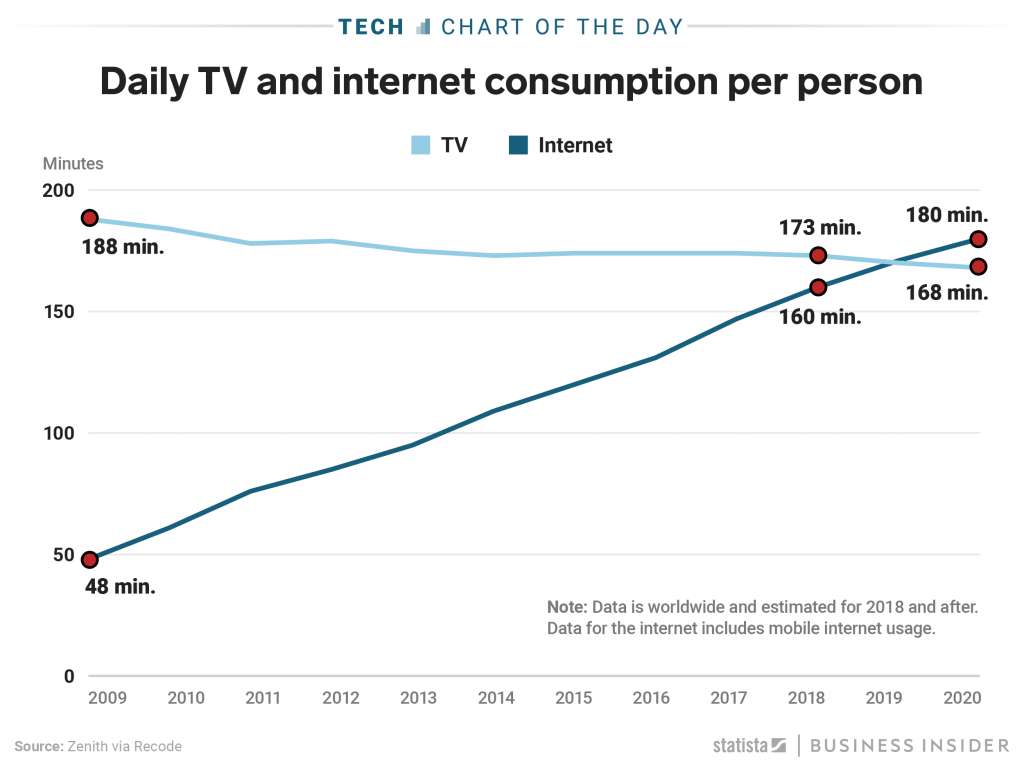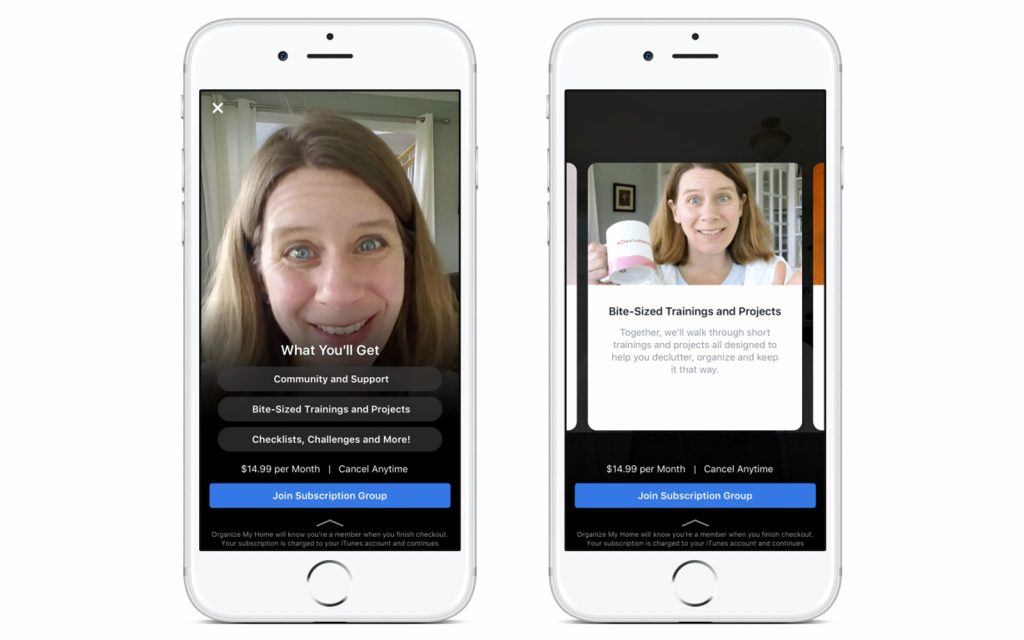By Avtar Ram Singh, {grow} Contributing Columnist
Last week, Kevin Systrom, CEO of Instagram, took the stage at a San Francisco event and announced IGTV, a stand-alone extension of the Instagram platform that allows users with a significant following to upload videos of up to an hour in length, and up to 10 minutes for people like you and me with a more modest following.
It makes sense. Facebook has been heavily investing in video, a move that went from “exploring” to “aggressive” in the middle of 2017, with the announcement of Facebook Watch. Facebook’s plans on spending about $1 billion on shows for Facebook Watch this year.
There’s a catch, though. As things stand, all videos on IGTV will be vertical.
That’s the part that made me skeptical. Who’d watch a 40 minute show on a mobile phone in vertical format? Sure, for those 1-2 minute news sketches or the little features / documentaries that you see floating around Facebook … I get it. But something that’s 10+ minutes long?
Statista often make sense of breaking tech news with a relevant infographic, and sure enough – a couple of hours later, I noticed this graphic pop up.
It doesn’t completely shock me. I live in Singapore, and when I take the train to work or back home, I often notice half the people on the train catching up with a TV show on their phones. The other half are connecting to social media or the news.
Of course, everyone’s holding their phones horizontally and watching their TV show or the movie. It’s a natural inclination for me (and I would assume for most people) to just flip your phone on its side when you’re watching a long video and flip it back when you’re done.
Which is why this Instagram move seemed so strange … until I dug into it.
The Bet on Vertical Video
Instagram’s making the opposite bet. On their business website, they’ve made it clear that IGTV is built for how you use your phone – “vertical and full screen.”
When exploring the IGTV app, I noticed that most of the videos that were showing up in the “Popular” tab were between a minute and six minutes long. That seemed reasonable. But as I scrolled a little bit more, I noticed a 48 minute video from National Geographic pop up.
With 89 million followers, National Geographic is the #1 brand on Instagram. The video on IGTV, a documentary called One Strange Rock, hosted by Will Smith and produced by Darren Afonovsky currently has close to a million views, and over a thousand comments.
Intrigued – I looked at the comments. The second highest one?
“Who needs TV?”
The third highest is what amazed me the most – “I didn’t even realise I sat and watched the entire 45 minutes.” – and it has 200 likes.
I was fascinated. Tons of people were championing the content and the format, much to my surprise. I decided to give the video a chance, and 15 minutes later, realized that maybe there’s something to this vertical TV!
It May Solve a Facebook Problem
If you’ve been running Facebook ads at all for the last couple of years, you’ve probably noticed the steady increase in the cost of advertising on the platform. Here’s a look at the YoY change in Facebook CPMs over the last year:
While a certain amount of this increase can be attributed to Facebook’s recent newsfeed pivot, the longer term problem has been increased competition in the Facebook newsfeed, and Facebook having limited advertising inventory (Content Shock at work!).
The inclusion of Instagram as a placement for Facebook ads was one way to expand that, but IGTV provides an entirely new advertising platform for Facebook.
But more on that later.
It’s Not a YouTube Competitor, It’s a TV Competitor
A lot of people are talking about IGTV as a competitor to Netflix, or a competitor to YouTube, but the reality is, this is Facebook and Instagram challenging the future of television. They haven’t been entirely subtle about it either, with the “TV” in the name of the app, and the “static snow” effect in the app when you switch from one video to the other.
When I’ve thought about the future of television, I’ve always thought about a video service that worked across multiple platforms (Linear TV / tablet / mobile / desktop), had a built-in on-demand feature, and most importantly, allowed you to pick and pay only for the channels that you’d like to subscribe to.
No cable packages, no “packs” and “add-on packs” — a complete à la carte offering. YouTube TV has come close to this, but still has some ways to go.
So how exactly is IGTV taking on this model?
Facebook’s Running Another Little Experiment
A few days ago, news also broke of Facebook testing out a “paid feature” for Facebook Groups, where Group Admins can charge a subscription fee for joining a Facebook group in exchange of getting exclusive content.
This is where for me, things get interesting.
Facebook allowing users to directly monetize a Facebook product from other users is a first. There are plenty of people who set up exclusive groups on Facebook, charge a PayPal fee for access, and then manually add people to it. Facebook’s automating this, and I believe this is where IGTV’s experiments will soon start to come in.
As things stand, neither Instagram nor content creators can monetize their content via IGTV. This will likely not be the case for long. As Instagram ramps up users for IGTV, understands user behavior, identifies whose content is working better, they’ll slowly start rolling out an advertising product.
What will be interesting though, is whether or not they roll out a subscription product. It makes no sense for National Geographic to create a 45 minute documentary at considerable expense, format it for a vertical format exclusively for IGTV, and not make money off it.
I strongly believe IGTV will allow content creators to set-up subscriptions, thereby letting them charge people who want to view exclusive content a monthly fee for all-access, or ad-hoc fees for viewing specific videos.
This not only works well for content creators who will spend considerably more time and effort creating longer form content, it also helps IGTV build a proper working use case for legacy television channels like National Geographic and others – that IGTV has a base of ready and willing paying subscribers.
I’m pretty sure that at some point, IGTV will include the optional of “regular” horizontal video, to try and pull in TV networks like CBS and FOX for their content, and eventually, sports.
The Future of IGTV
With all this considered, and I realize that I might be getting way ahead of myself here, but here’s how I believe (and hope) IGTV will evolve:
- They’ll begin to allow content creators to monetize content via subscriptions
- They’ll eventually include horizontal videos, with the ability to cast / stream them to your TV via a Chromecast or Apple TV
- National Geographic is the beginning, with the case study success from them, they’ll only be able to attract more networks and content creators
- Somewhere around that point, they’ll probably also include the option for horizontal video
- Adding in the ability to include live streams, they’ll be able to pitch the service and get sports networks and broadcasters interested
- The ability to cross-promote content across Facebook Watch and IGTV will only end up being a big plus for content creators, enabling them to reach more audiences
- The transition from IGTV into being the future of television, will slowly begin to take shape
Or of course, it could go completely the other way. At this point, one can only be hopeful, can only speculate and can only hope that this turns into what consumers have always been looking for the television experience to be able to provide.
Your thoughts?








